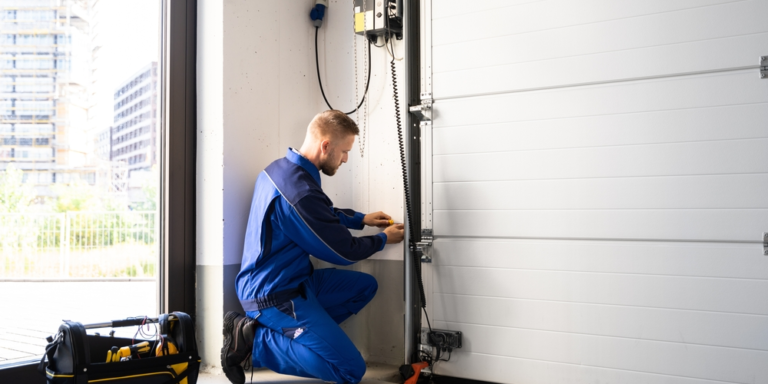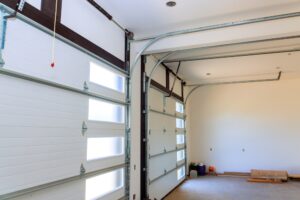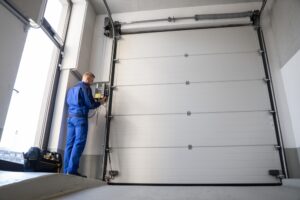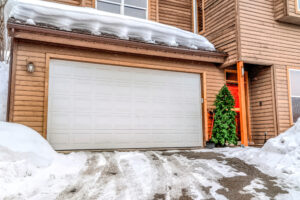A worn or broken garage door cable or spring isn’t just an inconvenience—it’s a major safety hazard. If your garage door isn’t working properly or you’ve noticed frayed or damaged cables, it’s critical to take action right away.
Before we get into why garage door cables matter, it’s important to note that garage door cable and spring replacement should always be handled by certified technicians. These systems are under high tension and can cause serious injury if handled incorrectly.
Why Garage Door Cables Matter
Garage door cables work hand-in-hand with high-tension springs to safely lift and lower your door. These springs are incredibly powerful and wear down over time. When they break, they often do so with a loud “pop” and can be dangerous.
The cable plays a crucial safety role—if a spring breaks, the cable helps contain the recoil, preventing it from snapping violently across your garage or injuring someone nearby. This is why your cables must always be in excellent working condition.
What Happens During a Garage Door Cable & Spring Replacement
When you call in a professional, they’ll begin by inspecting your entire garage door system for any signs of damage or wear. To ensure safety during the repair or replacement:
- The garage door opener is turned off
- The door is fully opened to release tension
- Clamps are used to hold the door in place
- The broken cable is safely removed and replaced
- Springs are reattached, and the system is tested
Don’t Wait Until It’s Too Late
A damaged garage door cable or spring can leave you stuck — or worse, lead to serious injury. If you’ve noticed your garage door behaving unusually, or if you see signs of wear on the cables or springs, don’t delay. Book a garage door cable or spring replacement as soon as possible.
Call our team of experts today—we’re available 24/7 to keep your home safe and secure. Let us restore your peace of mind with fast, professional service you can trust. Call Overhead Door Company today.
Frequently asked questions about garage door cables
How long do garage door springs last?
On average, garage door springs can last anywhere from seven to 10 years, or about 10,000 cycles. The lifespan of your garage door springs depends on several factors, including the type of spring, the weight of your garage door, and how frequently you use it. However, you can extend their life with proper maintenance and regular inspections.
Is replacing a garage door spring dangerous?
Yes! Replacing a garage door spring is extremely dangerous and should only be done by a professional who is trained to handle them safely and has specialized equipment. Since garage door springs are under immense tension, mishandling them can result in serious injury or even death, not to mention property damage.
What happens when a garage door spring breaks?
When a garage door spring breaks, it can be a dangerous situation. The spring’s primary job is to counterbalance the weight of the heavy garage door. Without this counterbalance, the door can fall rapidly and unexpectedly.
This poses a significant risk that can lead to a garage door spring accident and property damage. Stay clear of the door and schedule an emergency garage door repair service immediately.
Is it safe to use a garage door with a broken spring?
No. Using a garage door with a broken spring is extremely dangerous and should be avoided at all costs. Garage door springs are designed to counterbalance the weight of the heavy door, making it easier to open and close. Without this counterbalance, the door becomes incredibly difficult to operate and poses a serious risk of a garage door spring injury.
How do I get my garage door up when the spring breaks?
Opening a garage door with a broken spring is extremely dangerous. Even when broken, garage door springs may be under immense pressure and can cause serious injuries.
If you suspect you require a garage door spring or cable replacement, do not attempt to open your garage door.
How can I make a garage door spring safer?
While there’s no foolproof way to eliminate all risks associated with garage door springs and cables, you can take steps to make them safer.
One important factor to consider is the type of garage door spring you have. Torsion springs, located above the garage door, are generally considered safer than extension springs, which run along the sides. Torsion springs are enclosed and less likely to cause injuries if they break. However, both types require professional installation and maintenance.
Keep your garage door springs in optimal condition with frequent maintenance:
- Regular Inspections: Schedule garage door tune-ups and professional inspections at least once a year.
- Lubricate Regularly: Apply a garage door lubricant to moving parts as recommended by the manufacturer.
- Check for Damage: Look for signs of wear and tear, such as cracks, rust, or separation of coils.
- Avoid Overloading: Don’t overload your garage door with heavy items.
- Proper Adjustment: Make sure the spring tension is correctly adjusted by a professional to ensure optimal performance.
Even with proper maintenance, garage door springs can still pose risks. Always prioritize safety and never attempt DIY repairs.
How Can I Prevent a Broken Garage Door Spring?
The most significant step you can take to prevent a broken garage door cable and spring is to have your door regularly serviced and maintained by a garage door expert. They’ll be able to adjust your door’s mechanisms, ensure that moving parts are properly lubricated, and perform other maintenance tasks that keep your door running smoothly, putting less strain on your door’s torsion springs.
Another step you can take is to keep your garage warmer when the temperature drops to freezing or below. Even just keeping the door shut as much as possible and ensuring that your door’s weather seals are intact can help keep your garage warm enough to keep springs and cables more supple and less likely to break.




